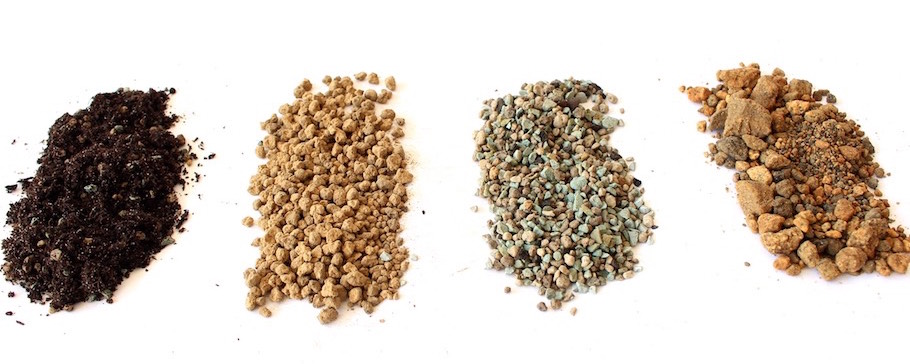Bonsai substrates
The quality of soil used directly affects the health and vigor of your tree. It’s our experience that unhealthy trees that lack vigor, are very often planted in poor Bonsai soil. Or worse, planted in normal garden soil. These types of soil harden easily when it gets dry, which is very harmful to the growth of Bonsai trees and makes proper Watering very difficult.
The soil requires several qualities for it to be considered a good soil mix for your bonsai:
Organic or Inorganic Soils
Soil mixes are described as being either organic or inorganic. Dead plant matters such as peat, leaf-litter, or bark are described as being organic soil components. The potential problem with organic soil components is that organic matter breaks down and reduces drainage over time. Some organic components deteriorate at varying speeds, so it’s hard to say how quickly organic soil becomes harmful. If you’re adamant about using an organic soil mix, we recommend choosing a mixture that uses pine bark. Most potting composts absorb water very poorly once they are completely dry. This is one of the biggest problems for cheap indoor Bonsai trees purchased at garden centers. You’d think you watered the tree but the water runs past the soil into the bottom of the pot!
Inorganic soil components contain little to no organic matter such as volcanic lava, calcite, and baked/fired clays. They absorb fewer nutrients and water than organic soils but are great for drainage and aeration. The limited absorption capacity also gives us more control over the amount of fertilizer in the soil.
A particle-based, well-structured, inorganic soil allows water to drain quickly and fresh air to continually enter the soil. A compacted organic soil that lacks structure also lacks aeration and drainage which deteriorates the overall health of your tree, and without swift action, will eventually cause root rot and kill your bonsai.
Soil components
The most common components for Bonsai soil mixtures are Akadama, Pumice, Lava rock, organic potting compost, and fine gravel also known as grit.

Recommended Bonsai soil mixtures
Different tree-species demand different soil-mixtures, so make sure to check our Tree species guide to find the optimum mixture for your specific trees. However, we can describe two main mixtures we use for either deciduous or coniferous trees. Both mixtures consist of Akadama for water retention, Pumice for good substrate structure, and Lava rock for aeration and drainage.
Note that both mixtures can, and should, be adapted to your circumstances and/or location. If you know you won’t have enough time to check on your trees twice a day, then add more Akadama or organic potting compost to your mix for increased water retention. If you live somewhere with a wet climate, add more lava rock or grit to enhance the draining qualities of your mixture.
Deciduous Bonsai soil
- 50% Akadama
- 25% Pumice
- 25% Lava rock
Coniferous and Pine soil
- 33% Akadama
- 33% Pumice
- 33% Lava rock









